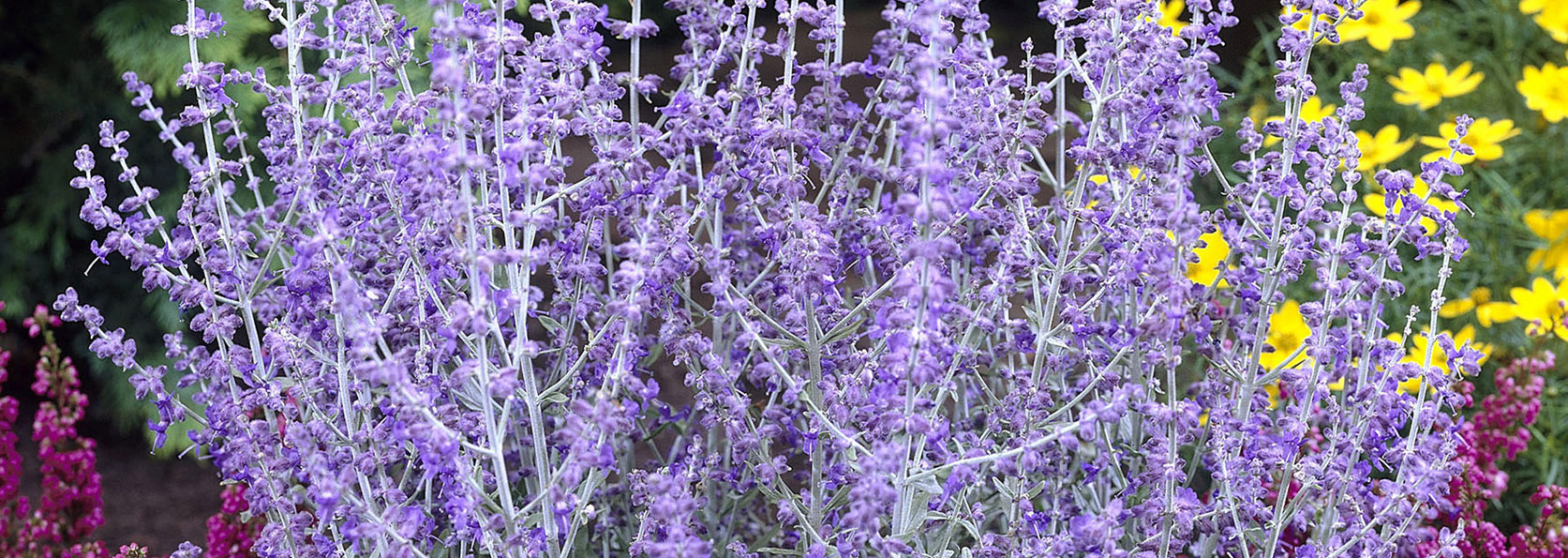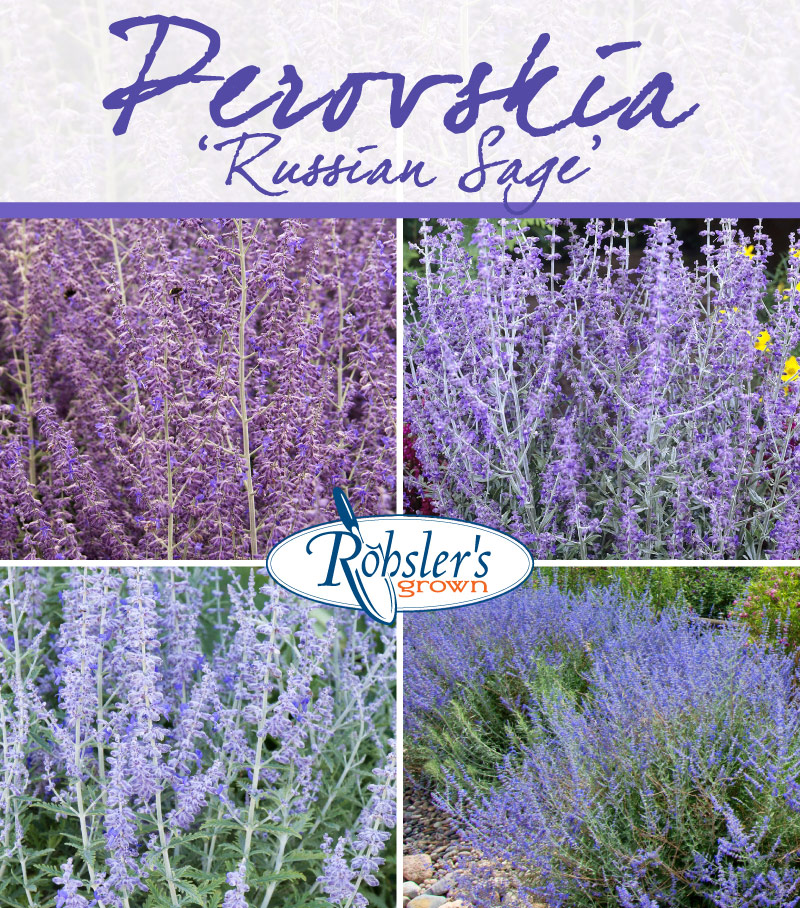The Czarina

Perennial Of The Week: Perovskia/Russian Sage
Plant aficionados have spotted plenty of Perovskia (Russian Sage) blooming in public and private plantings in recent years, and may even have mistaken this member of the Mint family for Lavender that very first time. Perovskia is decidedly fragrant, especially when its silvery leaves are crushed, and commands attention with its showy lavender blooms, but this woody-stemmed, deciduous beauty traces its roots (yes, we went there!) to southwestern and central Asia.
Named for Russian General Vasily Alekseevich Perovski (or Perovsky in some references), who worked to “push the boundaries” of his nation, Perovskia made its way to the United Kingdom just after the turn of the 20th century. Those familiar with traditional medicine know Perovskia for its anti-microbial and anti-inflammatory properties. Creative chefs have incorporated the blossoms into adventurous dishes, and crafters use Perovskia for a source of dye.
Modern gardeners appreciate Perovskia for its drought tolerance, resistance to deer and rabbits, and ability to thrive in a variety of soils. Sandy or loamy soils will be just fine, but keep in mind that good drainage is essential for this plant. Over-watering, like over-fertilization, actually damage Perovskia.
Although Perovskia will grow in sun to light shade, we highly recommend full sun for this plant, as the additional sunshine tends to produce stronger, more upright growth.
This plant makes an excellent accent anchor plant or backdrop in the garden. Planted in masses, or along pathways, Perovskia can act as a “hedge,” but remember that it will shed its leaves once the cold weather arrives.
Our five Rohsler’s Grown varieties of Perovskia include P. atroplicifolia, Little Spire, Little Lace™, Lacey Blue, and Crazy Blue. You’ll find all of these plants in the terra cotta pots that bear the now-familiar Rohsler’s Grown logo.
Perovskia atriplicifolia (Perovskia, for short), is native to the Himalayas and western China. This tall variety reaches 3-5 feet in height, and can grow 4 feet wide. A notable performer, this type of Perovskia will produce its lavender-blue flower spikes from July through October.
Little Spire stays a compact 2 feet tall and 2 feet wide. Gardeners like to use this variety for its violet-blue blossoms that appear from June to the first frost. This small form of Perovskia makes an excellent edging for pathways.
Little Lace™ is a diminutive variety that maxes out at 14 inches. Its purple flower spikes make it a popular choice.
Lacey Blue offers up its lavender-blue flowers from June until frost. This variety, which can grow up to 3 feet tall, features especially fragrant foliage.
Crazy Blue is another notably aromatic Perovskia. Between June and Septebmer, this variety produces purple-violet flowers on plants that remain 1.5 feet tall and wide.
Visit us today to learn more about the best ways to add Perovskia to your garden or landscape. We look forward to seeing you soon!

